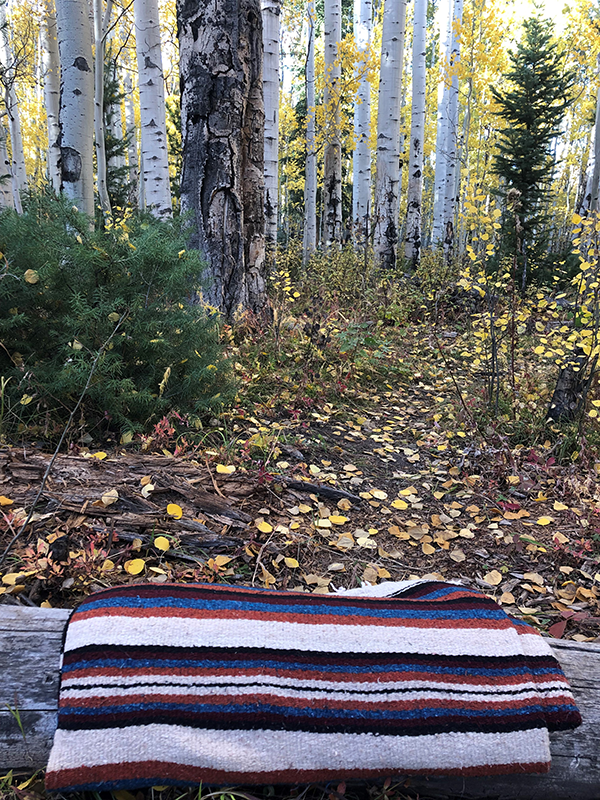Home > Ecotherapy for End-of-Life
Ecotherapy for End-of-Life
by Veronica Wiley
Ecotherapy
Ecotherapy, as defined by Jordan and Hinds in the 2016 publication Ecotherapy: Theory, Research and Practice, are psychotherapeutic activities (counseling, psychotherapy, social work, self-help, prevention, public health activities) that: are undertaken with ecological consciousness or intent; often utilize natural settings, activities, or processes as an integral part of the therapeutic process; focus on ecological aspects of self, identity, and behavior; and are at various scales, from personal to planetary.

A less clinical view of ecotherapy can be described as a process for healing the relationship between humans and nature. The idea that nature exists outside of ourselves and is something that takes effort and intention to connect to reflects our modern society. Eastern culture and philosophy often emphasize that the causes of human suffering arise from this myth of separation from nature and universal life force energies.
Witnessing the cycle of life and death in nature can create more ease in conversations of death and dying. Dispelling the myth of separation between humans and nature—placing the human experience of life and death within the contextual container of natural processes—has been shown to even bring physical, emotional, and spiritual comfort at the end of life. Nature is an access point for everyone, of any age, to contemplate and understand the rhythmic ebb and flow of seasons, growth, change, transformation, life, and death.
A 2017 critical analysis in Journal of Pain and Symptom Management reviews 225 scholarly documents, revealing several environmental factors to be considered for improving the quality of life and minimizing suffering in end-of-life settings. Nature was at the top of the list of “positive distractions” due to results indicating that exposure to nature reduces patient stress and improves psychological well-being in hospital environments, and that nature can be viewed as a spiritual healer that enables people to reflect on life, making it a valuable element in fulfilling existential needs.
The palliative grief parks project in Alberta, Canada, was intended to measure and evaluate the relationship between death, grief, and public parks. The study sought to understand individual perspectives and values regarding parks and nature at end of life through a narrative process that revealed three dominant themes:
Death brings people to parks and nature.
Parks and nature reveal death and life.
Nature teaches people to grieve.
Deborah Kelly’s 2017 dissertation through Middlesex University London, An Inquiry Into the Nature of Therapeutic Space in Palliative Care Groups, Working With Nature and Imagination—part of which was included in Ecotherapy: Theory, Research and Practice—examines and notes the positive effects of nature on caregivers and facilitators while working with groups of palliative care patients.
Everyone can benefit from the reminder that we are of the earth. Whether or not someone is able to be in the outdoors is irrelevant to the ability to connect with nature. Here are some simple ways to honor the connection to the innate (inner nature):
- Deep breathing with guided visualization focused on natural elements—the sound of the wind/ocean, the smell of a forest, the sensation of sun on skin
- Meditating on images of natural landscapes
- Pet/animal therapy
- Meditation on natural objects such as shells, rocks, pine cones, twigs, leaves
- Movement—even small, coordinated movements of touching fingertips together in rhythm with the breath—can have significant impact on the nervous system and somatic experience. Not to mention the impact that other movement practices such as dance, yoga, tai chi, etc. can have in assisting individuals process difficult emotions.
Bio

Veronica Wiley (they/them), MBA (outdoor industry), ecotherapy facilitator, E-RYT, EOL doula
Veronica has been a certified yoga instructor for over a decade. They have both E-RYT and continuing education provider credentials through Yoga Alliance. They started teaching hot yoga in 2012 and have added many modalities over the years, including power, sculpt, restorative, prenatal, and postpartum yoga. They have taught over 1,500 classes and facilitated over 15 yoga teacher trainings. After attending the International Yoga Festival in Rishikesh, India, in 2019 they returned to school to finish a bachelor of arts in music. They spent their last term studying classical Hindustani music and Kathak dance, traditions that originated in north India. Their undergraduate studies culminated in an academic thesis on music in modern yoga culture.
Most recently, Veronica has completed an outdoor industry MBA with a capstone project focused on providing care and support for end of life, death, and grief by incorporating ecotherapy and movement with their skills and training as a death doula and ecotherapy facilitator. The focus on end-of-life care was inspired by the sudden illness and passing of their father in July of 2021 after witnessing resistance and aversion to conversations about death by family and medical providers.
References
Jordan, M., Hinds, J., & Kelly, D. (2016). Chapter 6: Working With Nature in Palliative Care. In Ecotherapy: Theory, Research and Practice (pp. 84–97). Essay, Macmillan Education/Palgrave.
Kelly, D. (2017). An Inquiry Into the Nature of Therapeutic Space in Palliative Care Groups, Working With Nature and Imagination (dissertation). Retrieved October 21, 2021, from https://eprints.mdx.ac.uk/id/eprint/21959.
Sagha Zadeh, R., Eshelman, P., Setla, J., Kennedy, L., Hon, E., & Basara, A. (2017). Environmental Design for End-of-Life Care: An Integrative Review on Improving the Quality of Life and Managing Symptoms for Patients in Institutional Settings. Journal of Pain and Symptom Management, 55(3), 1018–1034. https://doi.org/10.1016/j.jpainsymman.2017.09.011
University of Alberta. (2021). The Role of Parks and Natural Places in Rural Palliative Care: Experiences and Processes for Parks Engagement. University of Alberta | Augustana Campus. Retrieved October 25, 2021, from https://www.ualberta.ca/augustana/research/centres/acsrc/projects/priority-areas/society/paliative.html.
Zywert, K., Quilley, S., Jakubec, S. L., Krishnamurthy, A., Ray, H., & Carruthers Den Hoed, D. (2020). Chapter 11: Grieving Nature—Grieving in Nature: The Place of Parks and Natural Places in Palliative and Grief Care. In Health in the Anthropocene: Living Well on a Finite Planet (pp. 241–250). Essay, University of Toronto Press.
